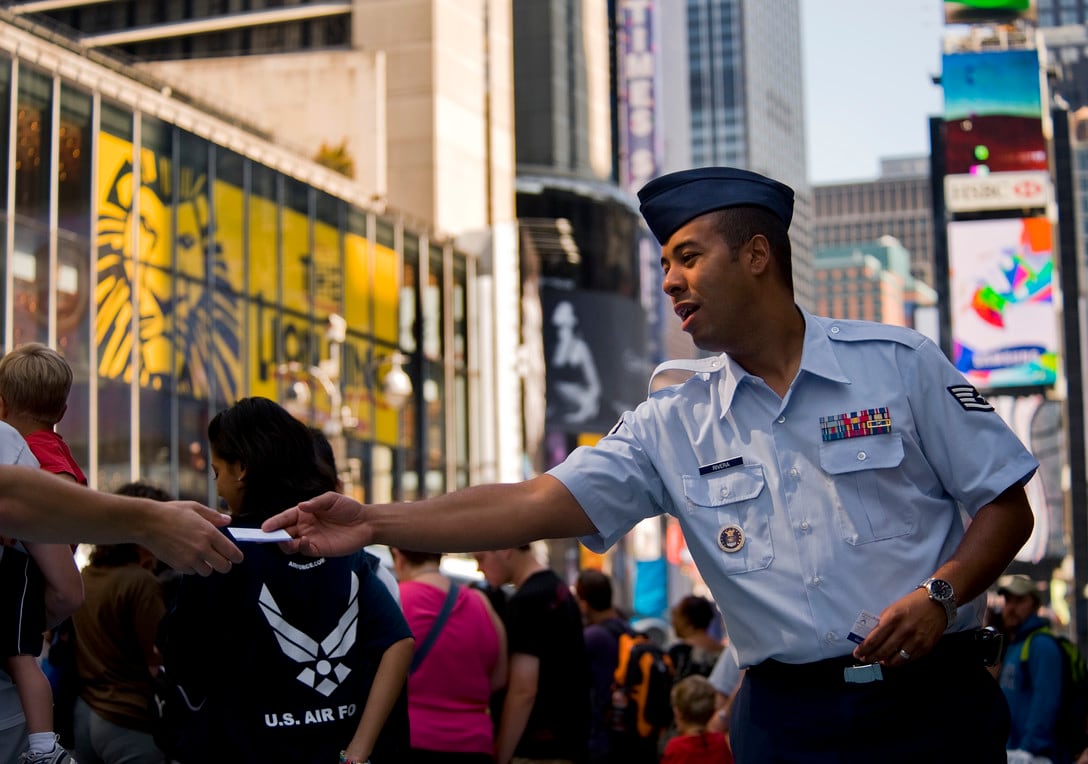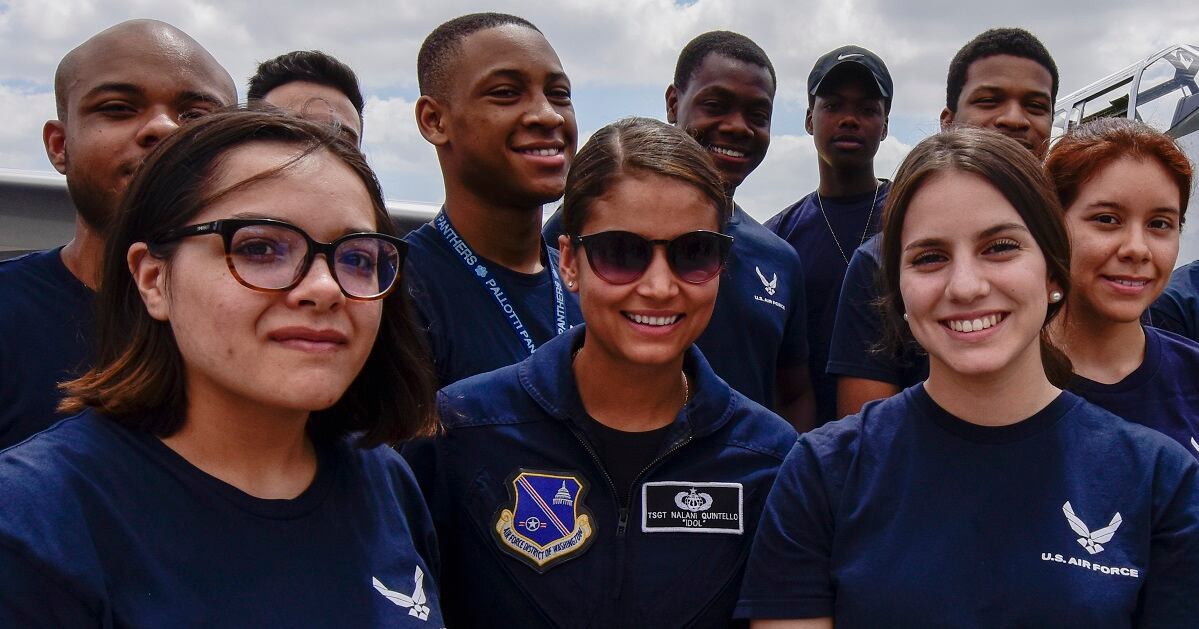The Air Force is trying to break down the walls between how it recruits active-duty, Air National Guard and Air Reserve airmen as it moves to a new “total force recruiting” strategy.
“It’s far more effective if we recruit to the United States Air Force and all the different ways you can serve,” said Maj. Gen. Jeannie Leavitt, commander of the Air Force Recruiting Service, during a roundtable with reporters Monday. “Full or part-time, in or out of uniform. ... We want to make it less confusing, how to join the Air Force.”
Leavitt, speaking at the Air Force Association’s Air Space Cyber conference in National Harbor, Maryland, said the Air Force is taking this step because many young people who might be interested in serving in the military don’t understand the differences between its components.
For example, a young person who wants to join might not be in a position where he or she can move to a different state. If they think active-duty is their only option, they could walk away without realizing they could join the Reserve instead.
“They know of the military, but they don’t necessarily know us,” Leavitt said.
Total force recruiting will help a recruiter find the best fit for potential recruit, she said — not just whether to go active, Guard or Reserve, but also whether to enlist or become an officer, or whether to work for the Air Force as a civilian.
“What’s the best match for this young person?” Leavitt said. “Everything we do is focused around total force recruiting at this point."
RELATED

Until now, cooperation between active-duty, Air Guard and Air Reserve recruiters in the field has been hit-or-miss, she said. Sometimes, if recruiters had good relationships and one found a potential recruit that might be a better fit elsewhere in the Air Force, they might hand off that recruit to their counterpart.
But in other cases, she said, those relationships weren’t there, and there wasn’t an incentive to hand them off. Now, recruiters in different components are getting to know each other and it’s become standard for an active-duty recruiter to pass a potential recruit off to a Guard or Reserve counterpart when it makes sense.
In February, Leavitt said, the recruiting service graduated its first class of total force recruiters who all learned together. Previously, active, Guard and Reserve recruiters all attended the schoolhouse at Joint Base San Antonio-Lackland in Texas, but each had separate training programs.
The three components are different enough that it wouldn’t work to have an active-duty recruiter trying to sign someone up to be a reservist, she said; recruiters will still specialize in their own component.
AFRS is still trying to figure out whether to provide incentives for recruiters who refer a potential recruit to a counterpart, and if so, how to recognize and reward those recruiters.
The Air Force is also working on better aligning the messages it puts out on various recruiting websites, such as AirForce.com, to represent the total force recruiting strategy.
Air Force Recruiting Service has expanded from three groups to four, Leavitt said, with the newly added group incorporating reserve recruiting squadrons. AFRS also expanded from 24 squadrons to 32, she said — one of which is the new 330th Recruiting Squadron, which was stood up last summer to focus on recruiting into special warfare career fields.

Diversity
Recruiting remains strong in the Air Force, Leavitt said, but improving diversity is necessary and it provides competitive advantage.
This is especially important when trying to find candidates to become rated airmen, such as pilots, she said. For years, the Air Force has had comparatively few women or minorities enter rated career fields. So AFRS has stood up Detachment 1 to focus on increasing diversity in rated career fields. The detachment is reaching out to women and minorities to talk to them about opportunities to pursue one of those careers.
Leavitt, who made history as the Air Force’s first female fighter pilot, said she has seen signs recently that more women are interested in becoming pilots. She also hopes the superhero movie “Captain Marvel” — in which the main character is a female Air Force fighter pilot and for which Leavitt served as a consultant — will inspire more young women in the coming years to become pilots.
Stephen Losey is the air warfare reporter for Defense News. He previously covered leadership and personnel issues at Air Force Times, and the Pentagon, special operations and air warfare at Military.com. He has traveled to the Middle East to cover U.S. Air Force operations.





